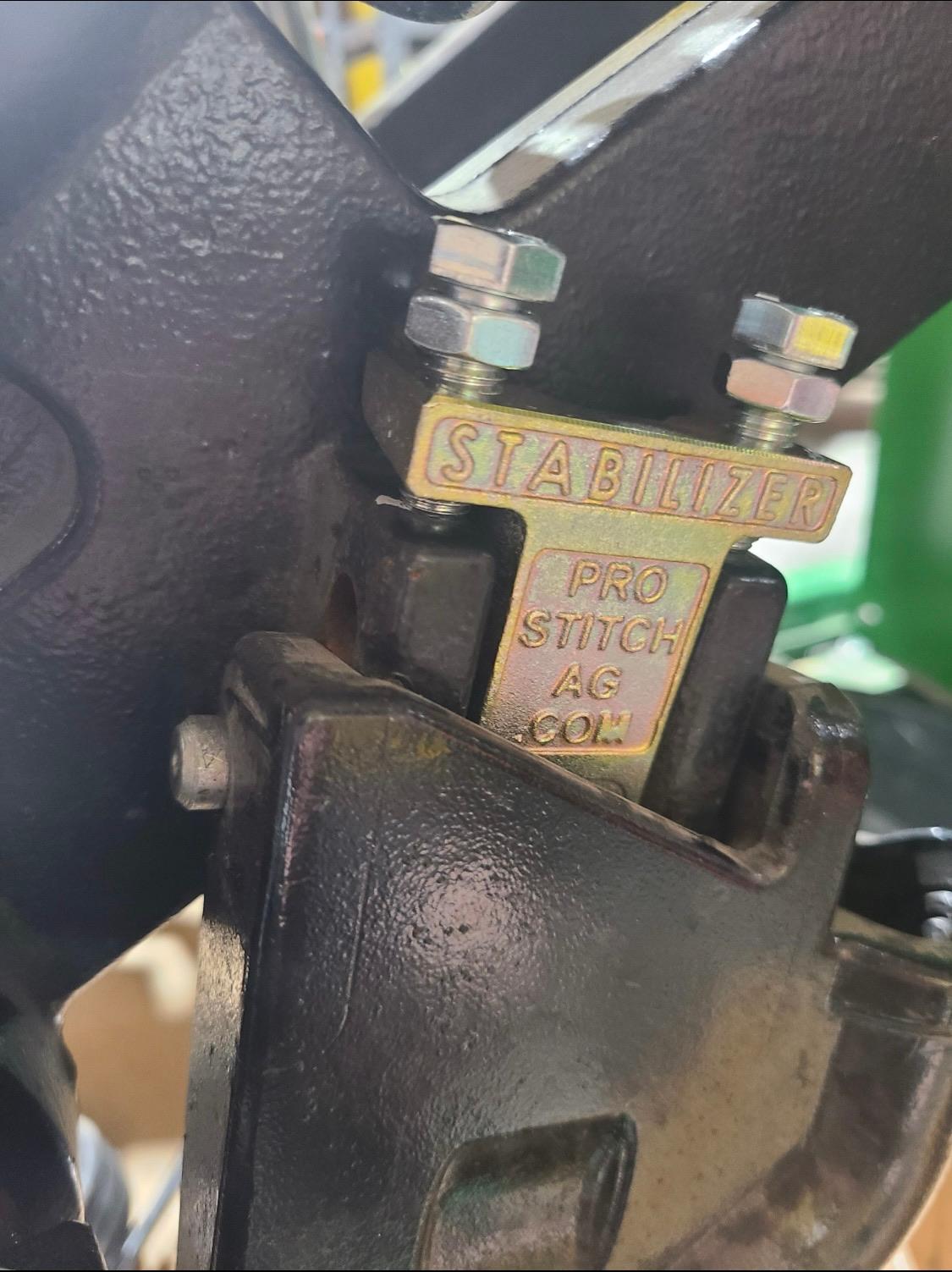by Ethan Begle, Technical Service
If you have more than ½” of up and down movement in your seed boot when measured against the blade, then its best to tighten that back up (1/8” play is the goal). You don’t want the seed boots completely stiff, however, as plugging becomes an issue where residue can’t work its way out. There have long been different fixes for this play, drilling the holes out and installing bushings still works. But figuring in your time and effort makes non-drilling options look more attractive. This is the advantage of Pro-Stitch boot stabilizers. The two jacker bolts tighten against the ears on the shank to hold the seed boot at the top of the holes. This makes up for any play in the shank holes but does not account for wear in the seed boot holes themselves.
JD Extended Wear seed boots & Pro-series boots have extra-long wear life (25,000 acres) however, the boot holes can become oblong faster than that. If your seed boots are straight at the bottom yet, this is when the bushing kits will be needed to repair the boot hole since there are currently no other kits on the market without replacing the whole boot. It is a common misconception that the Pro-Stitch can remove play from the holes of used seed boots, as they do not fix this issue.
Pro-Stitch Seed Boot stabilizer pictured. A great fix for egged-out mounting holes on the unit itself. It is a common misconception that the Pro-Stitch can remove play from the holes of used seed boots, as they do not fix this issue.
This Pro Series boot pictured left, still has a straight edge and can run more acres. If your seed boots are straight at the bottom yet, this is when the bushing kits will be needed to repair the boot hole since there are currently no other kits on the market without replacing the whole boot.
The Pro-series JD openers have been around for long enough now that we can see how the wear points are holding up. Specifically, the seed boot mounting holes on the shank. The old 90 series openers would develop an issue over time where the holes would become oblong from pin holding the seed boot rotating in the hole. Deere’s fix was a flag pin that keeps the pin stable so movement into the shank holes is minimal. It was a needed fix and at a reasonable cost ($13). We encourage checking for play in this pin each season and replacing often. Finally, check those leaf springs when looking at seed boots.
Pull out on the boot and let it spring back, if you don’t hear a loud “ping” against the blade the spring is losing its tension. Running your drill with lots of up-and-down play in the boot causes erratic depth and uneven emergence, some simple checks will keep that from happening.


